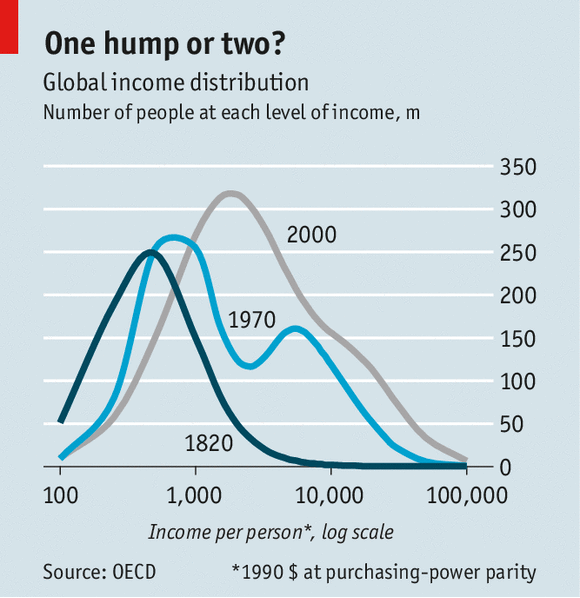I quote for
The Economist article:
The global Gini rose from 49 in 1820 to 66 in 2000. But this was not caused by widening disparities between rich and poor within countries (inequality in its usual sense). Inequality of that sort fluctuated for 130 years to 1950, before falling sharply in 1950-1980, in what the report calls an egalitarian revolution. Since 1980 it has risen again (as Thomas Piketty, a French economist, has shown), back to the level of 1820.
That implies the two-century rise in global inequality must come from elsewhere: from what is called “between-country inequality”, the gap between rich and poor nations. This gap has widened sharply. In 1820 the world’s richest country—Britain—was about five times richer than the average poor nation. Now America is about 25 times wealthier than the average poor country. The Gini coefficient for between-country inequality stood at only 16 in 1820 (ie, very low). It soared to 55 in 1950, and has been stable since. The driving force of inequality since 1820, in other words, has been industrialisation in the West.
The good news in shown in the graph is that a much smaller number of people in the world were very poor in 2000 than in 1820 and 1970, but also that the number of people in the middle incomes and in the upper incomes is much higher!

No comments:
Post a Comment